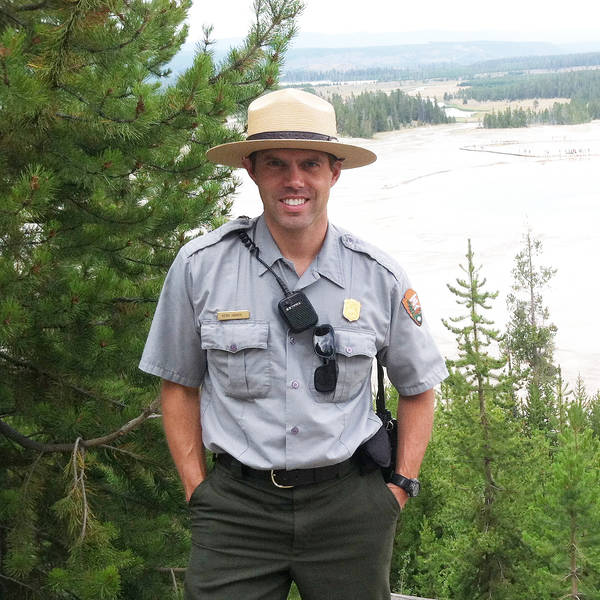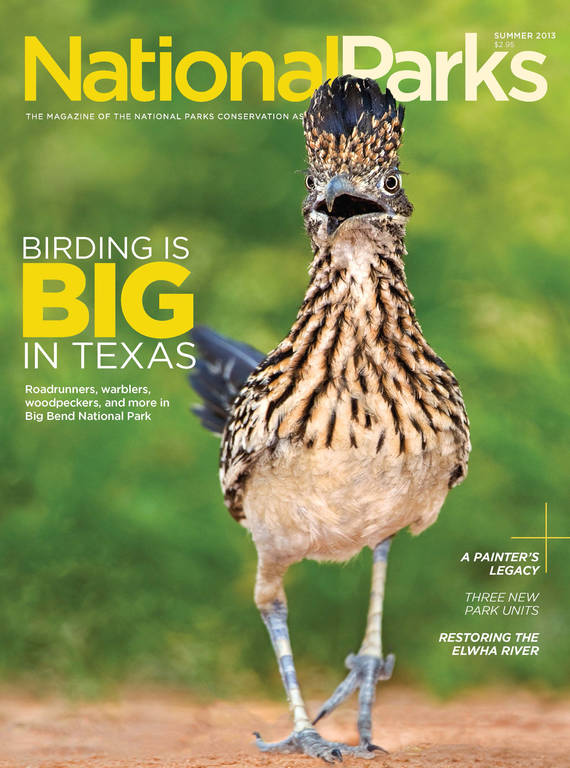Summer 2013
Frozen in Time
Artifacts preserved in ice reveal a lost chapter of ancient life.
By all accounts, the bison shouldn’t have been up in the high, rugged country of Glacier National Park. Not just because you can’t see any bison in Glacier today, but because historically, they were thought to limit their grazing to lower-elevation bunchgrass meadows and lush river valleys. Yet last summer, amidst glacier-scoured peaks 7,000 feet high, researchers discovered bison bones in an ice patch, and all evidence suggested the animal died there naturally.
Pei-Lin Yu, a cultural specialist with the Park Service, says the bones are yielding new details about Glacier’s high-altitude ecosystem, the lives of ancient hunters in the area, and climate change. The discovery raised tantalizing questions but also triggered a ticking clock. Prehistoric ice is melting and revealing artifacts and organic materials like wood, feather, and bone that have been frozen within the snow for thousands of years. As temperatures continue to rise, researchers and Native people are racing to find these materials before they vanish.
SECRETS IN THE SNOW
Enter the ice-patch archaeologist (think Indiana Jones with a GPS device and a wool cap in place of the fedora). These explorers don’t sift through the dirt for artifacts—they prowl the retreating edges of ice patches and glaciers, searching for ancient tools, weapons, wood fragments, bones, and even animal dung. Glaciers move, sort, and grind material down, but ice patches—the result of windblown snow accumulating on alpine slopes—are unique for their ability to stay put and preserve anything frozen within them. Throughout history, these ice patches and snowfields have been robust enough to survive the hot summer months, during which time they provide big-game animals relief from heat and insects. For thousands of years, ancient hunters followed bighorn sheep, caribou, and, as we now know, bison to these high-altitude oases. Silently, the hunters crept close to the ice patches, took aim, and fired. Darts and antler-tipped arrows soared. Some hit their targets, bringing weeks of sustenance to the tribe. Others missed their mark and were lost in the snow. Until now.
“Cultural sites throughout our reservation and aboriginal lands are further evidence of our history and customs,” says Francis Auld, of the Confederated Salish and Kootenai Tribes, which have teamed up to study Glacier’s ice patches with the Park Service, the Blackfeet Nation, and the Universities of Arizona, Colorado, and Wyoming.
Ice-patch research in the national parks started in Alaska’s Wrangell-St. Elias during the summers of 2001 and 2003, when a team of park staff and university professors discovered five prehistoric sites yielding wooden shafts, arrowheads, leather leggings, and a birch bark basket; some of the items were nearly 3,000 years old. Ice-patch research has since spread to other parks, and many of the discoveries challenge existing beliefs about our cultural and natural heritage. For example, the root structure of a “frozen forest” in Rocky Mountain National Park provides a reliable time marker for past warming periods and proves that big trees once grew at high altitude. The remnants of ancient snares in Wrangell-St. Elias revealed that hunters sought out squirrels and other small animals, not just big game. And the recent discovery of the bison bones and wood fragments from trees no longer found in the area is rewriting what we know about Glacier’s ancient landscapes.
Given that 95 percent of archaeological finds are associated with rocks—think fire pits, hearths, and arrowheads—the organic findings from ice patches are particularly important. Consider, for example, the 10,300-year-old throwing dart recently discovered by University of Colorado professor Craig Lee near Yellowstone. Not only is it the oldest wooden foreshaft found in North America, it’s also a snapshot of life at that specific moment in time. The wooden shaft was born from a birch sapling, the marks on the wooden shaft serve as an autograph by the hunter who wielded the arrow, and it belongs to a family of ancient weapons made also from golden eagle feathers and fibrous sinew.
“It shows that Native people were absolutely adapted to their environment,” says Lee. “They had every bit of technology to not only survive in these kinds of environments but to thrive.” Lee also believes these discoveries help make climate change tangible, showing both its cultural and environmental ramifications.

National Parks
You can read this and other stories about history, nature, culture, art, conservation, travel, science and more in National Parks magazine. Your tax-deductible membership donation of $25 or more entitles…
See more ›Artifacts aside, disappearing ice patches can lead to dire consequences elsewhere. Yu likens ice patches to “bank accounts” that provide a seasonal release of cold, clear, oxygen-rich water that supports life downstream. “The driving question behind this project is how our landscapes are shifting with regard to climate change, and in particular, ice patches,” says Yu. The Park Service is also trying to determine whether melting ice patches are being replenished by winter snows, or if they are growing smaller.
Along with mapping the edges of ice patches to study the rate of retreat, the Park Service is planning an interactive website about ice-patch archaeology, ancient life, and climate change. The agency is also partnering with Native American tribes in locating sites, conducting field surveys, and developing culturally sensitive protocols for handling artifacts. “The Park Service has a responsibility to the tribes,” says Yu. “We manage the parks on behalf of Americans, but the tribes have a special standing because these lands were originally theirs.”
Now that ancient ice is melting, Lee believes it’s up to resource managers to protect these artifacts. “We have to take on the responsibility for preserving them for future generations.”
About the author
-
 Kevin Grange Contributor
Kevin Grange ContributorKevin Grange is the award-winning author of “Wild Rescues: A Paramedic’s Extreme Adventures in Yosemite, Yellowstone, and Grand Teton,” “Lights and Sirens: The Education of a Paramedic,” and “Beneath Blossom Rain: Discovering Bhutan on the Toughest Trek in the World.” He has written for National Parks, Backpacker and the Orange County Register. He has worked as a park ranger and paramedic at Yellowstone, Yosemite and Grand Teton national parks and currently resides in Jackson Hole. Visit him at www.kevingrange.com.



